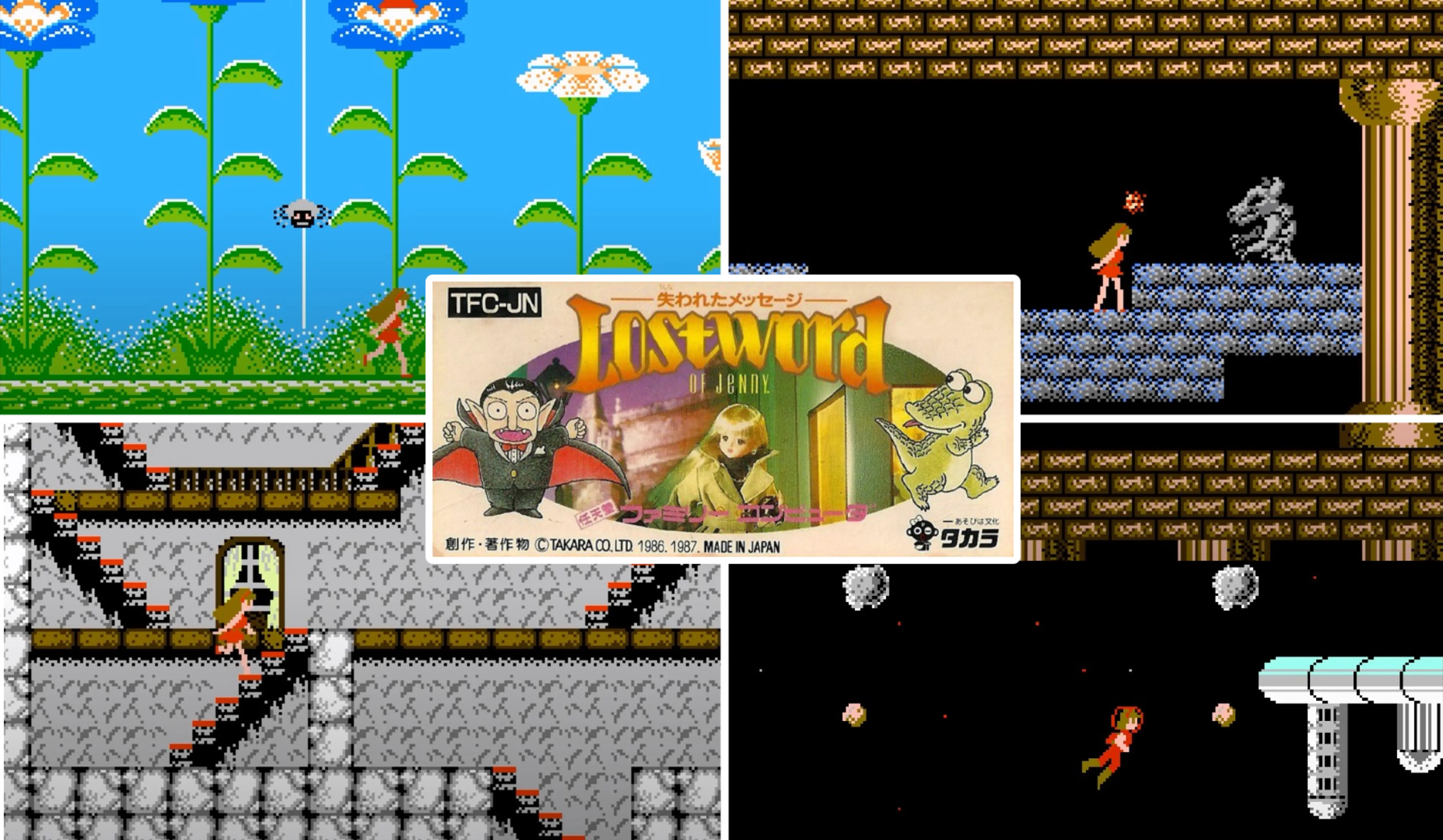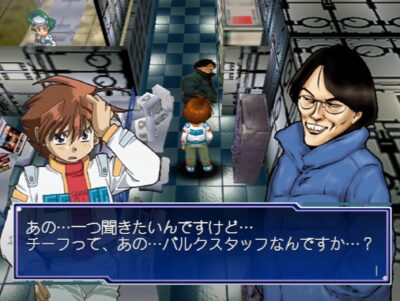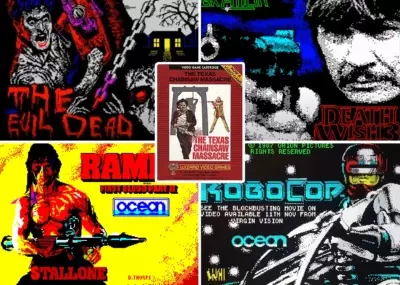
Barbie’s Japanese counterpart, Jenny, got her own Castlevania-style action game in the NES era. We take a look back at a bizarre tie-in…
Japan hasn’t reacted too well to the release of director Greta Gerwig’s Barbie film, currently doing great business in cinemas worldwide. The problem isn’t the movie itself, but its marketing. Released on the same day as Oppenheimer, director Christopher Nolan’s biopic about the creator of the first atom bomb, Barbie was pushed as part of an unlikely double feature, given the catchy name, ‘Barbenheimer’.
When web-users began pushing memes combining the two by, for example, Photoshopping the actress playing Barbie with a hairdo resembling a mushroom-cloud, many of the Japanese public took offence. As the only nation in history to have been struck by a nuclear bomb, Japan understandably didn’t see the funny side.
Incongruously combining the anodyne, pastel-pink world of Barbie with such inappropriately dark subject-matter was something the Japanese would never do themselves… or would they? Obscure video gaming history suggests otherwise.
Mattel market
The Japanese version of the NES was called the ‘Famicom’, short for ‘Family Computer’, another catchy Barbenheimer-like portmanteau-word in itself. The name gives away the console’s intended demographic: young kids whose parents wanted them to enjoy family-friendly games. And who better to provide such wholesome 8-bit fare than Barbie, Mattel’s doll, beloved of pre-teen girls everywhere?
In the west, Barbie has starred in such yawn-ware as Barbie Fashion Designer, Barbie: Pet Rescue, Barbie Magic Hair Styler, Barbie Sparkle Blast and the inexplicably long-running Barbie Horse Adventures series. Japan doesn’t really have Barbie as such, however, since it has its own blonde super-doll: ‘Takara Jenny’.
Jenny seems more grown-up than her Western equivalent, as (at least to judge by the limited evidence of her Famicom adventures) she much prefers to spend her days exorcising demons, killing vampires, desecrating graves and kicking gangsters to death than she does stroking horses, applying make-up or cutting people’s hair.
Pirate Jenny
Jenny’s history is quite confusing, because she is actually Barbie, but mutated, as if by the mad scientists of Mattel. Takara (now Takara Tomy) is one of Japan’s leading toy companies, and in 1982 it joined with its US equivalent, Mattel, to release an official localised version of Barbie for the Japanese market. Japanese Barbie’s design was altered somewhat to appeal to local tastes, gaining much larger eyes and facial features intended to make her resemble an anime or manga character.
Business disagreements ensued, however, and in 1986 Mattel teamed up with Bandai (now Namco Bandai) to distribute Barbie in Japan instead. Rather than exit the doll market gracefully, the original big-eyed ‘Takara Barbie’, as she was previously known, was renamed ‘Jenny’ instead.
Takara now began selling what amounted to a ‘pirated’ version of Barbie to domestic doll-lovers, and there was nothing Mattel could legally do about it – her manga-esque appearance was just different enough from the Western Barbie’s for it not to breach Mattel’s copyright, just so long as the figurine was appropriately renamed and repackaged.
According to official Takara literature, the reason for this sudden transformation was as follows: the Japanese Barbie landed a role in a popular stage musical as a character named Jenny. So successful was the show that she became indelibly associated with her role to the extent that the general public now thought Barbie really was Jenny. So she changed her original ‘Barbie’ name to ‘Jenny’ by deed-poll and successfully began posing as her on-stage persona in real life, in much the same way as most people in Britain now think the TV comedian Vic Reeves is actually called Vic Reeves, when in fact he’s a performer named Jim Moir.
Quite why Jenny/Barbie’s plastic boyfriend Ken simultaneously changed his name to ‘Jeff’ (surely it should have been ‘Ryu’?) is never explained.
Irate Jenny
In March 1987, Takara teamed up with secretive, Nintendo-linked developers TOSE to release Jenny’s first adventure in the realm of pixels, Lost Word of Jenny on the Famicom. That isn’t a careless typo: it is indeed a Lost Word, not a dinosaur-filled Lost World, like in Sir Arthur Conan Doyle, as the point of the game is to enable Jenny to gather the components of a secret code-word which will open the door to the musical theatre where she’s playing her usual singing role.
Jenny’s unable to go and ask for access at the front desk, however, as this is a magic lock guarded by a witch. Apparently, Jenny has been locked out from theatreland forever by the Forces of Evil for reasons unclear. This injustice makes Jenny angry, leading her to jump out of a wheeled, horse-drawn giant melon in outer-space and begin killing puppies, frogs, grasshoppers, humans, ghosts and rodents left, right and centre.
As the player progresses through levels in the role of Barbie/Jenny, they’ll encounter several randomly-generated numbers and letters which they have to write down, memorise or tattoo onto their own forearms, in order to enter the correct door-code at the end of the game. Right at the start, a suspicious-looking bald man in raincoat and dark glasses approaches Jenny in the street and pushes a notebook into her hands, presumably a reminder to the player to write these down. If you don’t, you can’t complete the game.
You probably won’t complete the game anyway, because it’s hard. The problem isn’t Jenny’s platforming prowess, but her attack moves. She can perform a crouching-slap, and has a limited arsenal of debilitating hairspray, mace, acid or air-freshener (it isn’t clear, but it comes in a spray-can) to squirt at opponents.
Sadly, though, her primary display of Girl Power is to perform a physically impossible, Chun-Li style high-kick. This works well enough in itself, but the collision detection is appalling, which really rather ruins what might otherwise have been an okay little game.
Plastic fantastic
You start off on a map screen, and have to negotiate your way past killer puppies, gun-wielding gangsters and speeding drivers. Littered around the single main road on which the map centres are a series of gateways leading to small, 2D platforming levels: only one is open at any given time, selected by the game at random.
There’s a pirate ship, a haunted house, graveyard, garden and giant cake to explore, plus a special outer-space level where Jenny flies around fighting cute little space-squids in a fashion which renders her kick attack even more impossible to execute. NASA’s responsible for facilitating this final adventure, since it has a launch pad in the same street as the local musical theatre and cemetery.
Rather than straight left-to-right scrolling obstacle courses, levels are short, self-contained environments filled with ladders, platforms and collectibles, like a multi-screen Donkey Kong. Each has several containers scattered around the place, which you need to open in search of a key allowing you to exit, armed with that area’s portion of the final key-code.
The containers are appropriate to each environment – barrels on the pirate-ship, gravestones in the graveyard – and conceal powerful enemies which pop up out of them before getting the relevant keys and codes kicked, slapped or hair-sprayed out of them by Jenny. Pleasingly, one such baddie is a literal Pop-Up-Pirate living in a barrel, just like in the popular plastic kids’ game. Occasionally, a small red bird flies out of the containers instead, just to make tiny tots smile.
When such a smiling toddler successfully grabs the key and exits each level, however, something extremely unexpected then happens …
Unholy cow
All of a sudden, the screen goes black, and the dread words “COW HEAD” appear in English. Mysteriously, Jenny now finds herself in the brazier-lit torture-dungeon of some medieval castle or other.
As she runs along in search of escape, a terrifying apparition runs on-screen and begins chasing her – this is Cow Head himself, a scrabbling, humanoid skeleton with the skull of a horned cow like those you see littering the desert in old cowboy movies, looking like some eldritch abomination conjured up by Devil-worshippers. Unless Jenny can kick this nightmare to death first, Cow Head will eat her. As a member of the undead, at the end of every level, Cow Head returns again – often in multiple, doppelganger form.
That’s not all. Once you escape Cow Head’s bony fingers, the true evil mastermind reveals himself – a character clad in white hood and robes. This is Whomanchun, leader of something called the Bi Bi Clan – which makes him head not of the KKK, but of the BBC. Weirdly, Whomanchun’s only function is to operate an end-of-level slot-machine like the one from Super Mario Bros 2, but which doesn’t appear to have any effect on actual gameplay.
Harmony of Dissonance
There’s a distinctly demonic vibe throughout Lost World of Jenny, seemingly because its designers wanted to make a Castlevania game rather than a Barbie one. The haunted house and graveyard levels are carbon copies of environments from Konami’s classic vampire-killing series, sharing their characteristic diagonal stairs and floating candlesticks, while enemies like bats, haunted armour, Death and Dracula are equally familiar.
Were it not for the fact screenshots show Jenny instead of 1980s Castlevania’s more usual Simon Belmont protagonist, you might be forgiven for mistaking this for a lost entry in Konami’s esteemed horror-platforming series. Give Jenny a chain-lash instead of a high-kick, and she might as well be called Simone Belmont instead.
How to explain all this highly contrasting thematic weirdness? Well, when you complete the game, you get to watch a special performance inside the musical theatre, where the game’s enemies parade on-stage and take a bow, like at the end of Super Mario World. As the enemies are all really great examples of cute pixel-work, this is quite enjoyable. Perfectly embodying the cult of kawaii, some of the sprites wouldn’t look out of place in genuine classics of the era like Bubble Bobble.
All enemies are named and gain a short description, but English transliterations on the game’s Wikipedia page don’t really help much. It includes such useless and oft-tautologous gems as “BLACKIE: He is a killer”, “PUMPKIN MAN: The man is wearing a pumpkin on his head”, “FROGMAN: He is the frog from the Flower Land” and, sinisterly, “GOD OF DEATH SKELETON: He is the messenger from Hell.”
The last word on The Lost Word
One character who also appears on-stage is named “ALIEN PIPO: Weird robot in space.” Pipo’s the name of a rival doll manufactured by Takara, leading me to guess that at least some of the game’s other enemies are based on popular Japanese toys, too. I couldn’t find any plaything named Cow Head during a search online, but maybe if Mattel ever commissioned a reworking of Lost Word of Jenny for the US market, it would replace the character with the similarly bony Skeletor from its own He-Man toy franchise, and so forth.
My best guess therefore is that the game’s ‘plot’ is an attempt to reflect the kind of bizarre adventure a child might invent for her Jenny doll when teaming it up with other random figures from her family’s collection.
Or, then again, there might be another explanation.
Today’s corporate world is so far more bureaucratically over-developed and legally restrictive, even in the world of toy-manufacturing. Whenever Mattel gives permission for a Barbie game to be made, it will include legally restrictive clauses in the contract, with limitations on what Barbie can and cannot do. For example, she isn’t permitted to engage in acts of extreme violence – such as high-kicking adorable big pink mice and puppies to death – like Jenny does here.
Back in the more innocent days of 1987, however, maybe Takara neglected to include so many clauses in its contract, giving developers TOSE much more leeway – even to the point of including KKK members and cow-demons as opponents.
If Lost Word of Jenny were made today, there’s no way it would ever be allowed to turn out so incredibly weird. They don’t make games like this any more, sadly. The lawyers won’t let them.












